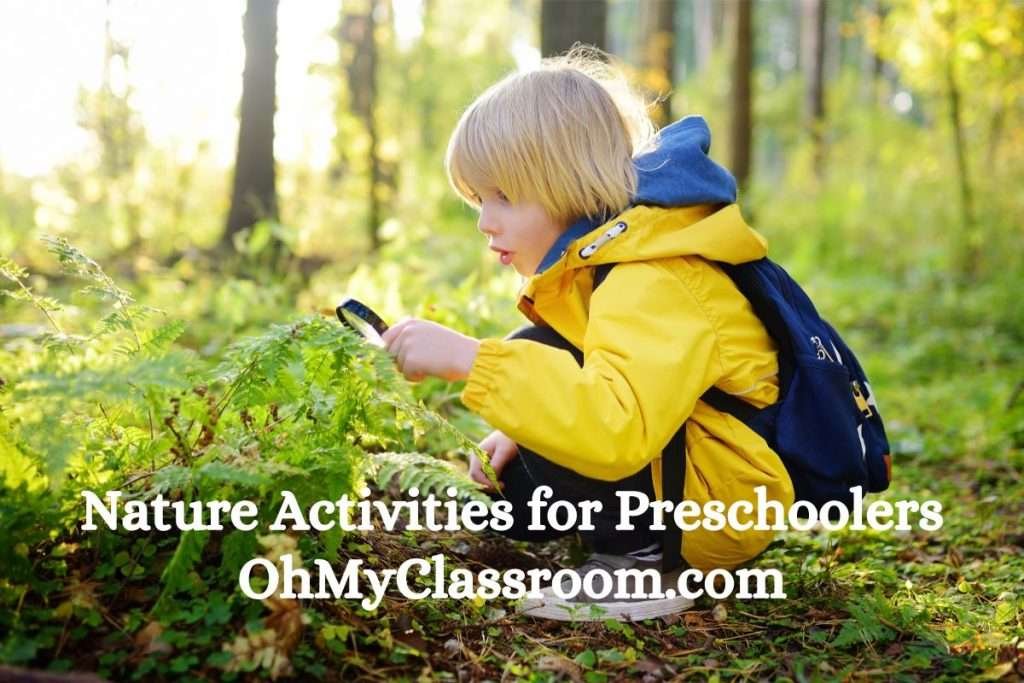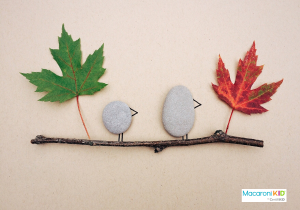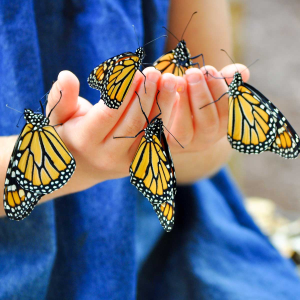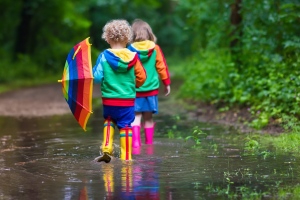In today’s digital age, it’s essential to encourage young children to connect with nature and the outdoors.
Nature activities for preschoolers not only promote physical health but also foster a sense of wonder and curiosity about the world around them.
We will explore a variety of engaging and educational activities that will help preschoolers connect with nature while having fun.
So, put away those screens and let’s embark on a nature-filled adventure!

1. Getting Started: Safety First

Before diving into nature activities, it’s crucial to ensure the safety of your little explorers. Dress them appropriately for the weather, apply sunscreen, and check for any potential hazards in your chosen outdoor location. Always supervise them closely, especially when they’re near water or handling wildlife.
2. Exploring the Garden

A garden, whether in your backyard or a local one, offers endless opportunities for learning and fun. Teach preschoolers to identify different plants and flowers, let them pick vegetables to learn where food comes from, and go on a bug safari to search for insects. It’s a hands-on classroom for nature education.
3. Nature Scavenger Hunt

A scavenger hunt is an exciting way to engage preschoolers with their surroundings. Create a list of items commonly found in nature, such as leaves, pinecones, rocks, or specific types of flowers. Then, let them explore and check off items as they find them. It’s a thrilling adventure that sharpens observation skills.
Related: 22 Cool Clay Activities for Preschoolers
4. Creative Nature Art

Encourage creativity by using natural materials. Gather leaves, sticks, and rocks, and let preschoolers create their own artwork. This activity allows children to express themselves while appreciating the beauty of nature. Their creations can be both beautiful and eco-friendly.
5. Bird Watching

Bird watching is a delightful way to introduce preschoolers to the world of wildlife. Provide them with binoculars and a bird guidebook, and observe the feathered friends in your area. Discuss their colors, songs, and habits. It’s a peaceful and educational experience that connects kids with nature.
6. Picnicking in the Park

Pack a picnic basket with your preschoolers’ favorite snacks and head to a nearby park. Enjoying a meal in the natural surroundings can be a simple yet memorable experience. It’s an opportunity to relax, bond, and appreciate the outdoors together.
7. Planting Seeds and Watching Them Grow

Teach preschoolers about the life cycle of plants by planting seeds and caring for them. Watching seeds sprout and grow into plants is not only educational but also instills a sense of responsibility and patience in young minds. It’s a lesson in nurturing and growth.
Related: 25 Creative First Day of School Icebreakers
8. Butterfly Watching

Preschoolers will be captivated by the beauty of butterflies. Plant butterfly-friendly flowers in your garden or visit a butterfly garden. Observe these colorful insects as they flutter by, and learn about their fascinating metamorphosis from caterpillar to butterfly.
9. Rock Collecting

Children love collecting things, and rocks can be fascinating treasures. Explore parks, nature trails, or even your own backyard to find unique rocks. Discuss their different shapes, colors, and textures. It’s a great way to encourage curiosity and observation.
10. Puddle Jumping Fun

Rainy days offer unique opportunities for outdoor play for kids. Dress your preschoolers in rain gear and encourage puddle jumping. The sheer joy of splashing in puddles, feeling the rain on their faces, and discovering reflections is an experience they’ll treasure.
11. Insect Hotel Inspection

If you’ve built an insect hotel, periodically inspect it with preschoolers. Discuss which insects have taken up residence and why these tiny guests are vital for the ecosystem.
12. Nature Storytelling

Wrap up your nature-filled day with a storytelling session. Encourage preschoolers to create stories inspired by their outdoor adventures. This fosters imagination and language development while reinforcing the lessons learned during their nature activities.
13. Leaf Rubbings

Collect a variety of leaves from different trees. Place a leaf under a sheet of paper and use crayons to rub over the leaf’s surface. The intricate patterns of the leaves will transfer onto the paper, creating beautiful leaf rubbings. This activity helps children learn about leaf shapes and textures.
14. Nature’s Orchestra

Explore the sounds of nature with your preschoolers. Go on a listening walk and encourage them to identify different sounds, such as birds singing, leaves rustling, or water flowing. You can even create simple musical instruments from natural materials, like twig xylophones or pinecone shakers.
15. Outdoor Art Gallery

Transform your backyard or a nearby park into an art gallery. Provide easels, paints, and canvases, and let preschoolers create their own masterpieces inspired by the natural surroundings. It’s a wonderful way to blend creativity and outdoor appreciation.
16. Bug Hotel

Teach preschoolers about the importance of insects in the ecosystem by building a bug hotel together. Use natural materials like twigs, leaves, and pinecones to create a cozy habitat for insects. Observe and identify the various bugs that check in.
17. Nature’s Color Hunt

Explore the vibrant world of colors in nature. Create a color chart with different shades of colors and go on a color scavenger hunt. Challenge preschoolers to find natural objects in each color category, like red flowers, green leaves, or brown sticks.
18. Cloud Watching

Lie down on a grassy field and gaze up at the sky. Encourage preschoolers to identify shapes in the clouds. It’s a simple yet imaginative activity that sparks creativity and fosters a connection to the ever-changing sky.
19. Bark Rubbings

In addition to leaf rubbings, you can also create bark rubbings. Find trees with interesting bark textures and use crayons to make rubbings of the bark patterns. This activity helps children learn about the diversity of trees.
20. Nature’s Symmetry

Explore the concept of symmetry in nature. Look for symmetrical objects like butterfly wings or flower petals. Discuss symmetry as you find these objects and encourage preschoolers to create their own symmetrical designs with natural materials.
21. Miniature Garden

Let preschoolers become miniature gardeners. Provide them with small pots, soil, and a variety of seeds or seedlings. They can plant their mini gardens, water them, and watch as their plants grow. It’s a hands-on lesson in nurturing life.
22. Sound Mapping

Take a large piece of paper and some crayons to an outdoor location. Have preschoolers sit quietly and listen to the sounds around them. As they hear different sounds, encourage them to draw pictures or write words to represent what they hear, creating a unique “sound map.”
23. Nature’s Alphabet

Combine nature exploration and literacy by going on an alphabet hunt. Challenge preschoolers to find objects in nature that correspond to each letter of the alphabet. For example, A for acorn, B for bird, C for cloud, and so on.
24. Outdoor Yoga

Introduce preschoolers to the benefits of mindfulness and relaxation with outdoor yoga. Lead them through simple, child-friendly yoga poses in a natural setting. It’s a calming activity that helps them connect with their bodies and the environment.
25. Bug Identification Chart

Create a bug identification chart with pictures of common insects found in your area. Take it with you on nature walks and encourage preschoolers to spot and identify bugs. This activity promotes learning about local wildlife.
26. Nature’s Sound Storytelling

Listen to the sounds of nature, such as birdsong, rustling leaves, and flowing water. Then, use these sounds as inspiration to create impromptu nature stories. Preschoolers can take turns contributing to the story, enhancing their storytelling skills.
27. Bee-Friendly Flower Planting

Teach preschoolers about the importance of pollinators like bees. Plant a variety of bee-friendly flowers in your garden or in pots. Observe bees as they visit the flowers and explain their role in pollination.
28. Leaf Pile Exploration

During the fall, collect a pile of fallen leaves. Let preschoolers jump into the leaf pile, toss leaves in the air, and explore their textures and colors. It’s a sensory-rich activity that celebrates the changing seasons.
29. Mini Weather Station

Set up a mini weather station with preschoolers. Use simple instruments like a thermometer, rain gauge, and windsock. Record daily weather conditions and discuss the changes in weather patterns over time.
30. Rock Painting

Gather smooth, flat rocks and decorate them with paint. Preschoolers can get creative by painting animals, flowers, or inspirational messages on the rocks. These painted rocks can be used to decorate your garden or shared as gifts.
31. Nature’s Scent Trail

Explore the world of scents in nature by collecting various leaves, flowers, and herbs. Encourage preschoolers to smell each item and describe the scents they encounter. Discuss how certain scents can be soothing or invigorating.
32. Feeding the Birds

Set up a bird feeder in your yard or balcony and observe the different bird species that visit. Teach preschoolers about the birds’ diets and habits. It’s a wonderful way to connect with nature and foster empathy for wildlife.

